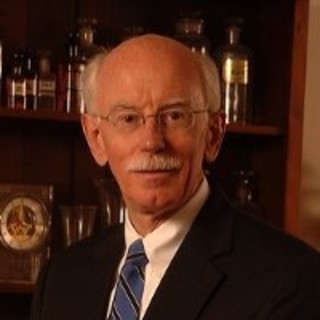
The lonely person perceives that no one cares, that no one wants to help. He or she feels trapped and has little appreciation of how to overcome the perceived situation. There is plenty of opportunity for help but health care providers, including physicians, are little aware of perceptual loneliness or its adverse sequelae. We need to learn.
Everyone has had periods of feeling alone — a child went off to college, a friend moved away, a spouse, parent or child or significant other died; they are many causes. Most find ways to cope, to deal with the grief over time. But for many others, the loneliness that could be transitory becomes persistent with the perception that no one cares, understands, or appreciates the depths of their distress. It is this conversion from temporary situational to long-term perceived loneliness that is of concern.
In 2018, Cigna released results from a national survey of more than 20,000 Americans on loneliness. It noted that loneliness had reached “epidemic levels” in America, with nearly half of Americans reporting that they sometimes or always feel alone or left out. A 2018 AARP survey of 6,343 Americans ages 45 and older found that 35 percent were lonely. It is not clear how many of these fell into the category of chronic perceptual loneliness but loneliness is common among seniors and is endemic in the retirement community where I live. No one knows the total number of long-term lonely residents but it much higher than most would anticipate. After all, we have so many options for social engagement, from restaurants to share a meal and conversation, groups for games, discussions, education, to spontaneous interactions in the hallways with neighbors and other that we assume no one could possibly be lonely.
Chronic loneliness is more common among older individuals. Temporary stresses in life that only transiently affect younger individuals can have a profound long-term impact among elders. Not only does being lonely inflict emotional discomfort, it also inhibits many key physiologic parameters leading to multiple disease states and an earlier death. Chronic loneliness is not just a negative feeling; it is as great a risk factor for disease and death as smoking, obesity or diabetes. Despite all of this, loneliness is usually not appreciated as a serious health issue and goes unrecognized by the medical community. Worse, the lonely person perceives that others are no longer friends and so avoids them or subconsciously pushes them away — just the individuals that could be of most assistance.
Of course, we all like and want to be alone at times. That is perfectly normal, necessary, and healthy.
Why do we feel lonely? It is actually an evolutionary characteristic developed for self-protection. Our early ancestors needed a group for protection. Absent the group, the individual was at grave risk. The feeling of “social pain” evolved to alert the person to attend to group interactions. Consider that even today, banishment from a tight knit community or religious group inflicts striking emotional pain.
Perceived loneliness negatively impacts many cellular activities so that inflammation is heightened, immune function suppressed and aging is accelerated. In short, perceived loneliness is very bad for our social and our physical health.
While it’s difficult to calculate the total monetary costs of loneliness, an AARP study from 2017 sheds some light. It found that Medicare spends approximately $134 more per month for each socially isolated older adult than it would if the person were connected. Since an estimated four million older adults enrolled in traditional Medicare are socially isolated, according to the AARP, this represents an estimated $6.7 billion in additional Medicare spending annually. Certainly this is enough for Medicare and other insurers to take notice.
The interesting observation is that lonely people often believe that they are tending to their social relationships when just the opposite is closer to the truth. Others sense a rejection just as does the lonely person. This dynamic creates a downward spiral of greater and greater separation from just the people who could and would most like to assist.
Loneliness: Human Nature and the Need for Social Connection by Cacioppo and Patrick discusses loneliness in much greater detail.
I have written in "Longevity Decoded – The 7 Keys to Healthy Aging" of the critical importance of social engagement. Healthy connections with others literally slow the aging process; but loneliness and its implications does just the opposite. Feelings of connectedness reduce our anxieties and stresses; they are amplified in the chronically lonely.
Having all these attributes in a retirement community are necessary to help the lonely person but not sufficient because his or her issue is a perception of reality, not reality itself. What can be done?
First, it is important to recognize that most such individuals will not reach out for help. After all, their perception is that no one wants to help or at least no one appreciates their situation. So, it is incumbent upon all of us to reach out to them. Perhaps just a few words in the supermarket, remembering a birthday, positive comments about clothing or whatever. Small gestures first, larger next.
There are many professional resources for help – primary care physicians (PCPs), nurse practitioners, mental health counselors, and social workers are but a few. Yet, they can only help if they know there is a need. More often than not, they do not.
Given its very serious health consequences, physicians and payers need to understand just what loneliness is, what it does to impact adverse health outcomes and how it can be addressed. Education is critical. Unfortunately, even when it is appreciated, physicians often feel ill equipped to manage loneliness.
PCPs should actively screen for loneliness just as they would other social determinants of health, especially among older individuals. A few questions can serve a brief screening tool which can be followed by the 20 question UCLA loneliness scale which is an objective measure; a shorter form is also useful.
Primary care providers, especially, should watch for social isolation and factors that intensify it — such as hearing, mobility, vision loss, or sleep difficulties. These can be addressed directly or via an appropriate referral. Other community options for loneliness include: senior centers for social engagement, exercise and specific programs, community transportation resources and educational programs and exercise programs.
But much of loneliness is resultant to a person’s assessment of their situation; it’s a qualitative more than a quantitative issue. Medications to assist with anxiety and depression, if present, can be appropriate but will have no impact on the loneliness. Adapting the situational status is a necessary but not sufficient first step. The individual’s perception of his or her loneliness must be altered, perhaps with some relatively simple counselling but often cognitive behavioral therapy is necessary to lessen the sense of isolation. The concept is to shift the individual’s interpretation of social situations towards the positive.
There’s no pill that can treat loneliness. It requires a different set of tools: professional time and community resources. Often community resources are available but not accessed unless contacted. But first, physicians and especially PCPs need to become more aware of the frequency, the symptoms, the impact, and how to address loneliness and concurrently payers need to afford professionals the time to be effective.
Stephen C Schimpff, MD, MACP, is a quasi-retired internist, professor of medicine and public policy, former CEO of the University of Maryland Medical Center, senior advisor to Sage Growth Partners and author of Fixing the Primary Care Crisis and Longevity Decoded – The 7 Keys to Healthy Aging.
Previously published in Managed Health Care Executive.







